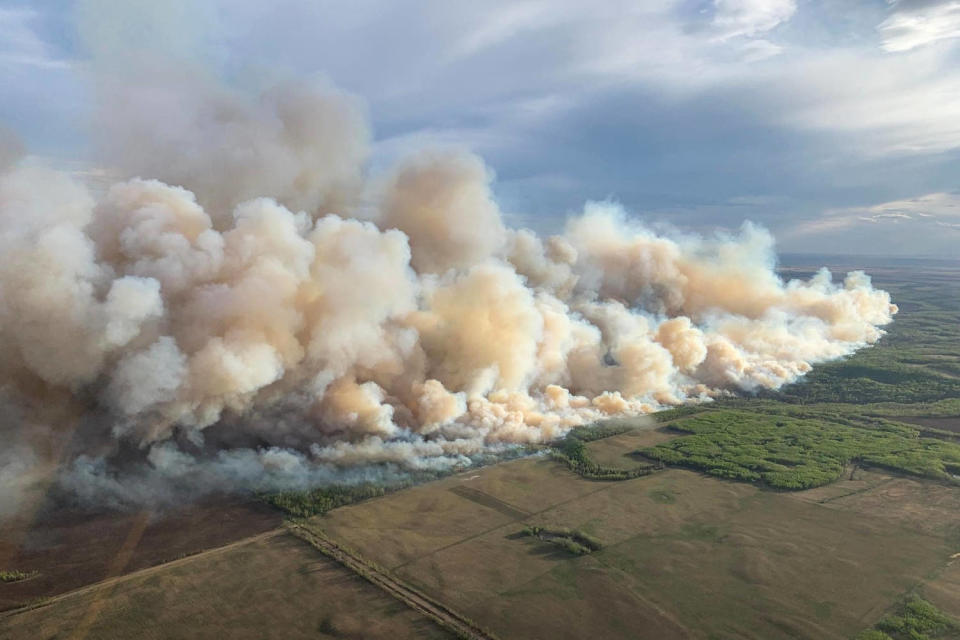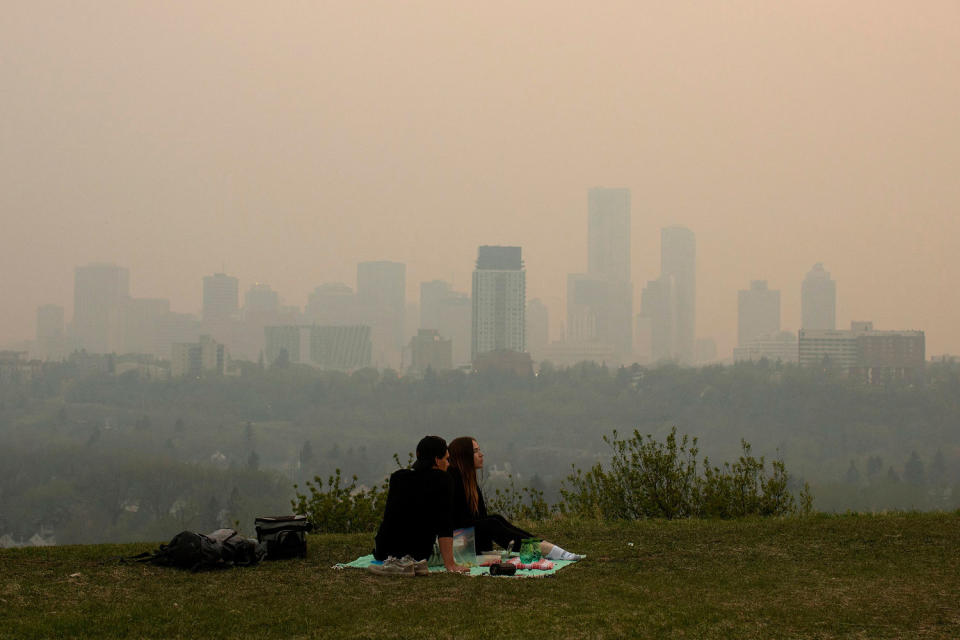Canadian wildfires trigger air quality alerts across 4 U.S. states
Hazy conditions blanketed parts of four U.S. states Monday, as smoke from wildfires in western Canada triggered air quality alerts and warnings.
Canada has 146 active wildfires burning, including dozens in British Columbia and Alberta that are characterized as “out of control,” according to the Canadian Interagency Forest Fire Centre.
In the United States, alerts were in effect in Montana, North Dakota, South Dakota and Minnesota, as winds carried plumes of smoke over the region.
The Minnesota Pollution Control Agency issued an air quality alert Sunday in response to a “band of very heavy smoke from wildfires in northeast British Columbia.”

The agency said the northern half of the state has since cleared up, but “smoke will linger over southern Minnesota on Monday as northerly winds become light during the day.”
The air quality index Monday showed conditions across the four states ranging from “moderate” to “unhealthy” for the general public. The index was established by the U.S. Environmental Protection Agency to measure daily air pollution levels and communicate the associated risks.
Air pollution from wildfires is closely tracked because small particles in smoke that are less than 2.5 micrometers in diameter — about 4% of the diameter of an average human hair — are small enough to reach deep inside the lungs.
Exposure to this type of particulate pollution can cause inflammation and weaken the immune system and may also exacerbate or increase the risk of asthma, lung cancer and other chronic lung diseases. Older people, infants, children and those who are pregnant are most vulnerable when air quality worsens.
The air quality index measures that small particle pollution, called PM2.5, along with four other major pollutants: ground-level ozone, carbon monoxide, sulfur dioxide and nitrogen dioxide.

Fires have engulfed more than 24,000 acres in western Canada, marking the first series of major wildfires this season.
On Sunday, authorities issued an evacuation order for thousands of residents in Northern Rockies Regional Municipality and Fort Nelson First Nations in British Columbia because of fast moving blazes.
Last summer, smoke from wildfires in Quebec blanketed huge portions of the U.S., sending air quality levels plummeting in cities from the Midwest to the Eastern Seaboard.
Canada experienced its most devastating wildfire season in recorded history last year, with more than 45 million acres burned, according to the Canadian Interagency Forest Fire Centre.
The country is once again bracing for a season of increased fire risk.
The Canadian government said Friday that drought conditions “are expected to persist in high-risk regions in May,” increasing the “risk and intensity of both natural and human-caused wildfires.”
Studies have shown that climate change is creating warmer conditions that can more easily dry out vegetation, a key ingredient for wildfires to ignite and spread. As such, wildfires are expected to be more frequent and more intense in a warming world.
This article was originally published on NBCNews.com

